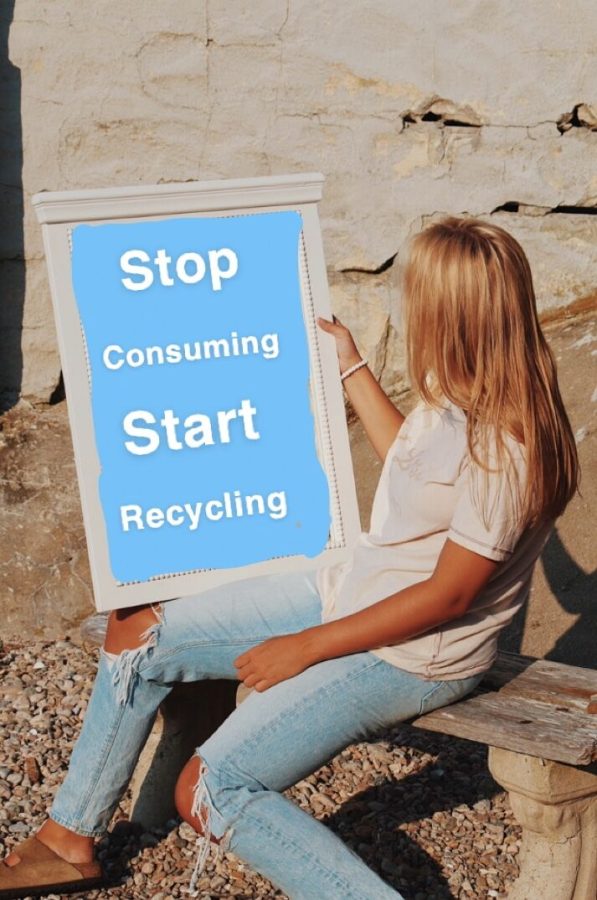Villa-Vogue: It’s Time to Rethink Fast Fashion
Trombly urges others to stop shopping from brands that practice fast fashion.
September 30, 2020
While surrounded by racks of identical sweaters and ripped jeans, you begin to fill the plastic bin at your feet. You’re facing the cashier, watching her swipe each shirt with a scanner, stuffing your new collection of clothes into a plastic bag. You insert your card, despite the fact that your purchases will fall to the wayside of your closet in a matter of a week. It doesn’t matter. The adrenaline from shopping carries you to the next store. Have you taken a second to think about the ethics of the company you are supporting? Have you stopped to think about why you were able to buy those pairs of shorts with loose change? Probably not.
Have you ever noticed while walking into a clothing store that the items in the window or on the shelves are vastly different than they were a week before? Sale sections of stores are rapidly growing as piles of untouched clothes are added to the collection. While seasonal releases of clothing lines used to be the norm, retail stores now release new items weekly, even daily, to keep up with consumer demand. Welcome to the phenomenon of fast fashion.
Fast fashion can be described as cheap and trendy clothing that takes inspiration from the most recent fads and turns them into products for clothing stores at breakneck speed. The idea is to get the newest styles on the market as fast as possible, so consumers can purchase these new products at the height of their popularity. The process of fast fashion may seem harmless, but in reality, it forms a key part in the toxic system of overproduction, making fashion one of the largest sources of pollution in the world.
According to World WildLife, it takes more than 2,700 liters of water to make one cotton shirt. In order to produce one pound of cotton, 1,320 gallons of water are required. This means that the crumpled tee you have stuffed in the back of your dresser is around 713 gallons of water wasted. Now picture how much water waste is used to create a mass production of cotton shirts. Not only this, but it has been reported by the Huffington Post that the average American throws out 68 pounds of textiles per year. In case the sheer wastefulness isn’t vexing enough, most fast fashion products are made with inexpensive, petroleum-based fibers that do not decompose, taking up landfills of space for decades to come.
If fast fashion is so poor for the environment, why are consumers still succumbing to the industry? In short, the answer is money. The process starts with large corporations subcontracting manufacturers overseas to the lowest bidder, the goal being for buyers to spend as little money on production as possible. These factories, or sweatshops if you will, put the concern of production before that of employee safety. By paying less money for production, large clothing corporations are now able to charge consumers less for the products they sell. Despite the fact that everyone is looking for a bargain, there is one group in particular who is especially guilty of such: college students.
So, as students at the University, what can we do to avoid the support of fast fashion industries? To start, stop purchasing products from these kinds of detrimental companies.
Fast fashion brands we can avoid are: Shein, H&M, Zara, Uniqlo, Forever 21, TopShop, Victoria’s Secret and Urban Outfitters. Next, start visiting your local thrift store, donating old clothes and buying from sustainable clothing companies. A few examples of ethical brands that are against fast fashion include: Patagonia, Eileen Fisher, Reformation and Levi’s.
For years, fast fashion has had a negative impact on the environment, the U.S. economy and the exploitation of factory workers, and it lessens consumers’ sense of value. As students, it is time to take a step towards a greater understanding of the fast fashion phenomenon. We have the power to change our behavior for the interest of a sustainable future.


